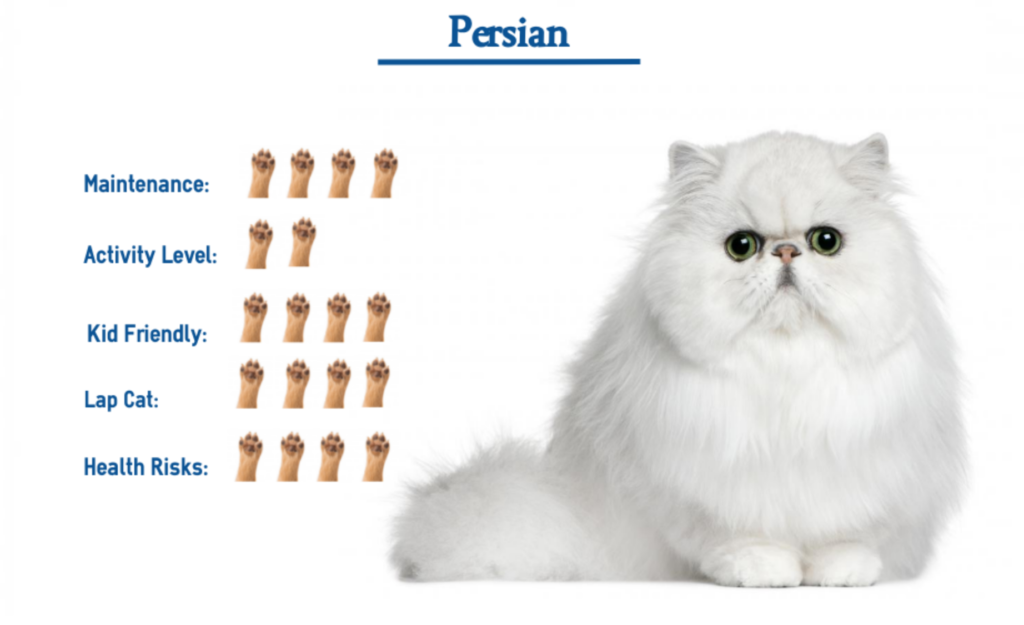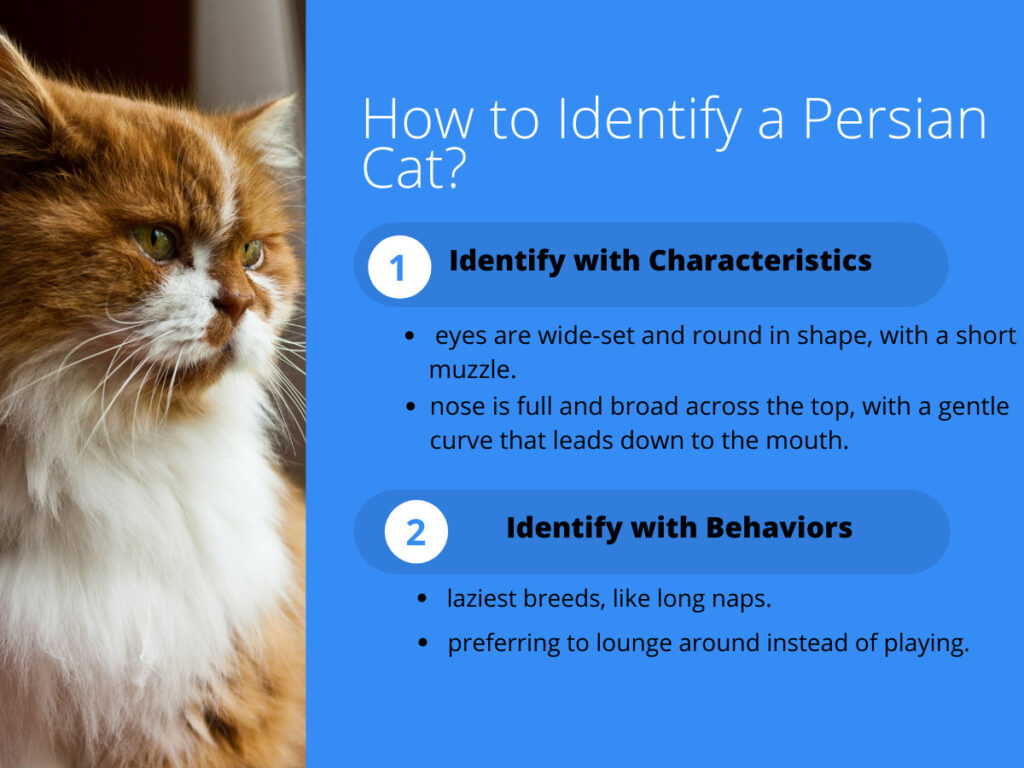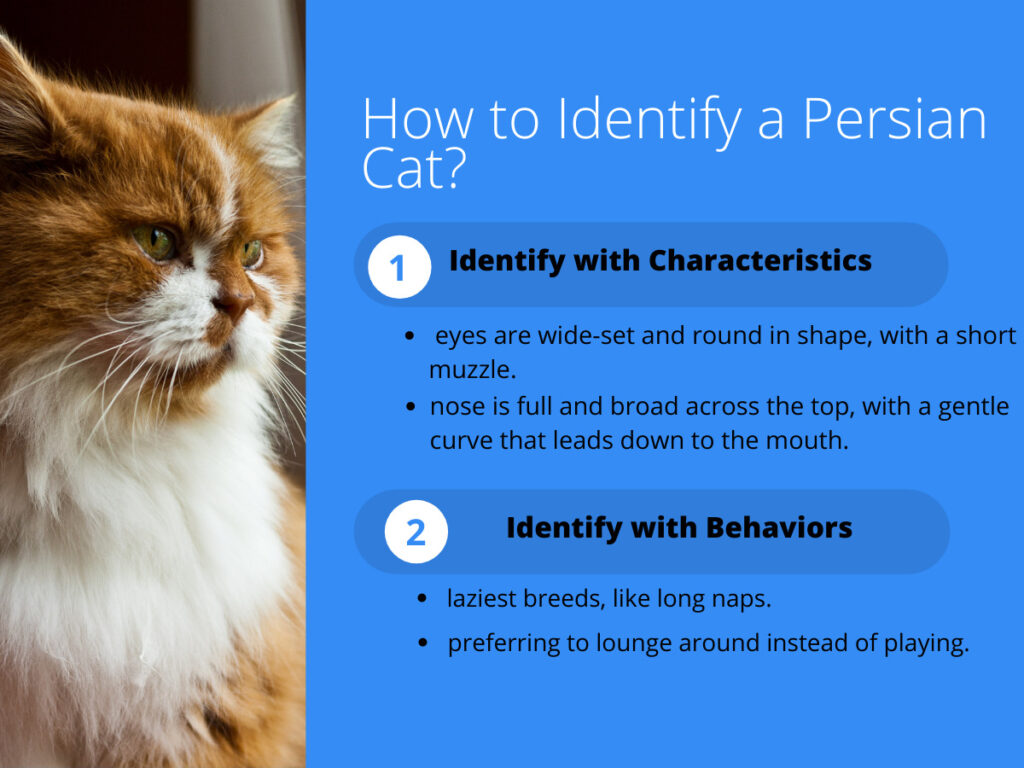Have you ever wondered about the personality traits of Persian cats? These fluffy felines are known for their distinct features and gentle nature. In this article, we’ll dive into the world of Persian cats and explore their unique personalities in more detail. From their calm and laid-back demeanor to their loving and affectionate nature, you’ll learn all about what makes these cats such popular pets. So, if you’re a cat lover or simply curious about the fascinating world of Persian cats, keep reading to discover more about their personality traits.
When it comes to Persian cats, their laid-back nature is one of their most defining personality traits. These cats are known for being calm and relaxed, often taking long naps and enjoying a peaceful environment. But don’t mistake their laid-back demeanor for laziness! Persian cats may be low-energy, but they are still curious and enjoy exploring their surroundings. Their gentle and affectionate nature also sets them apart. Persian cats are often referred to as “lap cats” because they love nothing more than to curl up on your lap and receive some gentle strokes and cuddles. Their loving and sweet temperament makes them great companions for families and individuals alike.
If you’re interested in learning more about Persian cats and their unique personality traits, stay tuned for our upcoming articles. We’ll delve deeper into their behavior, preferences, and tips on how to provide them with the best care possible. Plus, at the end of each post, we’ll include 10 common questions and answers about Persian cats, so you can have all the information you need to become a Persian cat expert. Get ready to unravel the mysteries of Persian cats and uncover what makes these adorable felines so beloved by cat enthusiasts worldwide.
Understanding the Personality Traits of Persian Cats
Persian cats are known for their luxurious coats, flat faces, and sweet temperament. These feline friends have a distinct personality that sets them apart from other cat breeds. In this article, we will delve into the various aspects of the Persian cat’s personality, including their physical characteristics, temperament and behavior, history and origins, and how to care for them. So let’s dive in and uncover the intriguing world of Persian cats!
Physical Characteristics of Persian Cats
When you think of a Persian cat, the first thing that comes to mind is probably their beautiful, long and silky coat. These cats have a distinct thick fur that requires regular grooming to keep it looking its best. Their coat comes in a wide variety of colors, ranging from white and black to shades of gray and tortoiseshell.
Apart from their stunning coat, Persian cats have a unique and distinctive face structure. They have a flat face with a short nose, large round eyes, and small ears. This adorable facial feature is one of the reasons why Persian cats are so popular among cat lovers.
Temperament and Behavior of Persian Cats
Persian cats are known for their gentle and calm nature. They tend to be laid-back and enjoy spending their days lounging around the house. They are not the most active breed of cats and are content with a peaceful and quiet environment.
One important aspect of the Persian cat’s personality is their love for human companionship. They are extremely affectionate and enjoy being in the company of their human family members. Persian cats make excellent lap cats and are often found curling up on their owner’s laps for a cozy cuddle session.
Another characteristic of Persian cats is their reserved nature around strangers. They are typically shy around new people and may take some time to warm up to them. However, once they trust you, they will shower you with love and affection.
History and Origins of Persian Cats
The origins of the Persian cat can be traced back to ancient Persia, which is modern-day Iran. These cats were highly regarded and treasured by royalty and nobility. They were often depicted in ancient Persian artwork, showcasing their regal and majestic appearance.
The Persian cat breed was introduced to Europe in the 17th century and gained popularity among cat enthusiasts. They were exhibited in cat shows and quickly captured the hearts of many with their distinct look and gentle nature.
Caring for Persian Cats: Grooming and Hygiene
One of the most important aspects of caring for a Persian cat is their grooming routine. Due to their long and dense coat, Persian cats require regular grooming to prevent tangles and matting. Daily brushing is necessary to keep their fur in prime condition and to minimize shedding.
In addition to brushing, regular bathing is necessary for Persian cats to keep their coat clean and free from dirt and oils. It is recommended to use cat-specific shampoos that are gentle on their skin and coat.
The facial structure of Persian cats also requires special attention. Their flat face can lead to tear staining, so it is crucial to clean their eyes daily to prevent any discoloration or discomfort.
Caring for Persian Cats: Nutrition and Diet
A balanced and nutritious diet is essential for the overall health and well-being of Persian cats. These cats have specific dietary needs due to their brachycephalic (short-nosed) face. It is important to provide them with a diet that is easy to eat and digest.
High-quality cat food that is specifically formulated for Persian cats is the best option. These foods usually have smaller kibble size and ingredients that promote healthy skin and coat.
Caring for Persian Cats: Exercise and Play
While Persian cats are not the most active breed, it is still important to provide them with some form of exercise and playtime. Engaging in interactive play sessions with toys or using puzzle feeders can stimulate their minds and keep them physically active.
It is important to note that due to their short nose, Persian cats may have difficulty breathing during intense physical activities. It is best to consult with a veterinarian to determine the appropriate exercise routine for your Persian cat.
Health Concerns and Common Medical Conditions of Persian Cats
Like any other breed, Persian cats are susceptible to certain health issues. One common problem among Persian cats is their predisposition to respiratory issues due to their flat faces. They may exhibit difficulty breathing, snoring, or wheezing.
Another health concern in Persian cats is polycystic kidney disease (PKD). This genetic disorder affects the kidneys, causing the formation of cysts, which can lead to kidney failure. It is crucial to obtain a Persian cat from a reputable breeder who conducts appropriate health screenings to minimize the risk of PKD.
Regular veterinary check-ups, vaccination, and parasite prevention are essential to ensure the overall health and well-being of your Persian cat.
Training and Socialization of Persian Cats
Persian cats are known for their independent nature, but they can still be trained and socialized. Early socialization is important to help them become comfortable around new people and situations. Introduce them to different environments, sounds, and experiences gradually, ensuring a positive and gentle approach.
Training Persian cats can be a challenge due to their stubbornness, but with patience and positive reinforcement, they can learn basic commands and tricks. Training sessions should be short, interesting, and rewarding to keep them engaged.
Living with Persian Cats: Tips for a Harmonious Household
Living with a Persian cat can be a wonderful and rewarding experience. Here are a few tips to create a harmonious environment for you and your Persian cat:
- Provide a quiet and peaceful space for your Persian cat to relax and unwind.
- Create vertical spaces such as cat trees or shelves for them to climb and observe their surroundings.
- Establish a regular grooming routine to keep their coat healthy and mat-free.
- Keep their litter box clean and easily accessible.
- Provide stimulating toys and interactive play sessions to keep them mentally and physically engaged.
- Establish a consistent feeding schedule to regulate their appetite and prevent overeating.
Persian Cats and Other Pets: Compatibility and Introduction
Introducing a Persian cat to other pets in the household requires careful consideration and proper introduction. Persian cats are generally known to be tolerant and adaptable, but it is important to supervise their interactions with other animals.
Slow and gradual introductions are key to ensuring a smooth transition for both your Persian cat and your existing pets. Give them separate spaces initially and allow them to get used to each other’s scents. Monitor their interactions closely and reward positive behavior.
Persian Cats and Children: Tips for Safe Interaction
Persian cats can be great companions for children, but it is important to teach children how to properly handle and interact with them. Here are a few tips for safe interaction between Persian cats and children:
- Teach children to approach Persian cats calmly and gently, avoiding sudden movements or loud noises.
- Show children how to properly pet and touch the cat, avoiding sensitive areas such as the face and tail.
- Supervise interactions between young children and Persian cats to prevent any accidental harm to either party.
- Teach children the importance of respecting the cat’s boundaries and personal space.
The Influence of Persian Cat’s Personality on Owner’s Lifestyle
Owning a Persian cat can have a positive influence on your lifestyle. Their calm and affectionate nature can provide comfort and stress relief. Persian cats are great companions for those who prefer a quiet and peaceful environment.
However, it is important to consider the grooming requirements and potential health issues associated with Persian cats. Regular grooming sessions and veterinary check-ups are necessary to ensure their well-being. Make sure you are committed to providing the necessary care in order to fully enjoy the companionship of a Persian cat.
Myths and Misconceptions about Persian Cats
There are several myths and misconceptions surrounding Persian cats that need to be addressed. Some common myths include:
- Persians are high-maintenance cats: While their grooming routine requires dedication, Persian cats are generally low-energy and low-maintenance.
- All Persians have health issues: While Persian cats are prone to certain health conditions, responsible breeding and regular veterinary care can help minimize the risks.
- Persians are not affectionate: On the contrary, Persian cats are known for their loving and gentle nature. They enjoy being close to their human companions and provide endless affection.
Conclusion
Understanding the personality traits of Persian cats is essential for anyone considering adding one to their family. These majestic and loving creatures have a distinct temperament that sets them apart. From their physical characteristics to their calm demeanor, Persian cats make wonderful companions for those seeking a peaceful and affectionate feline friend.
So, if you’re looking for a regal and gentle companion who will bring joy and serenity to your life, a Persian cat might just be the perfect match for you. Embrace their unique personality, provide them with proper care and attention, and you’ll be rewarded with a lifetime of love and companionship.

Frequently Asked Questions:
- How often do Persian cats need to be groomed?
- Persian cats require daily brushing to prevent tangles and matting. Regular bathing is also necessary to keep their coat clean.
- Are Persian cats good with children?
- Persian cats can be great companions for children, but it is important to teach children how to properly handle and interact with them.
- What are some common health issues in Persian cats?
- Persian cats are prone to respiratory issues due to their flat faces and polycystic kidney disease (PKD). Regular veterinary check-ups are essential.
- Can Persian cats live with other pets?
- Persian cats are generally tolerant and adaptable, but introductions should be done slowly and supervised.
- Are Persian cats high-maintenance?
- While their grooming routine requires dedication, Persian cats are generally low-energy and low-maintenance.
- Do Persian cats shed a lot?
- Persian cats do shed, but regular brushing can help minimize shedding and prevent matting.
- How can I socialize my Persian cat?
- Early socialization is important for Persian cats. Gradually introduce them to new environments, sounds, and experiences in a positive and gentle manner.
- Are Persian cats good for apartment living?
- Persian cats are well-suited for apartment living due to their calm and low-energy nature.
- How can I prevent tear staining in Persian cats?
- Cleaning their eyes daily with a gentle solution can help prevent tear staining in Persian cats.
- How long do Persian cats typically live?
- Persian cats have an average lifespan of 12 to 15 years, but with proper care, they can live even longer.

